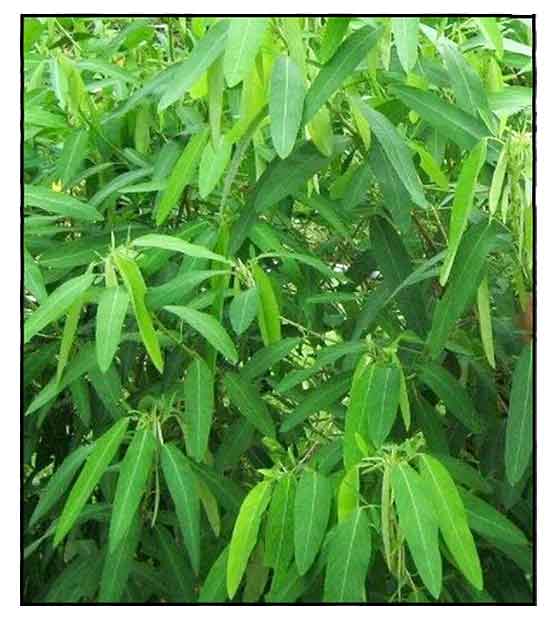 Gen info Gen info
- Codariocalyx is a genus of flowering plants in the legume family, Fabaceae.. It belongs to the subfamily Faboideae, and contains two species: Codariocalyx motorius and C. gyroides. (3) Both species are native to the Philippines.
- Codariocalyx motorius, known as telegraph plant, dancing plant, or semaphore plant, is a tropical Asian shrub in the pea family Fabaceae, one of the few plants capable of rapid movement; the others including Mimosa pudica (Makahiya), Dionaea muscipula (the Venus flytrap), and Utricularia.
- Dancing Grass was first introduced to the Western World in 1779 by Dutch physician Maarten Houttuyn, who gave it the name Hedysarum motorium. its notoriety was established in 1873 when Charles Darwin wrote to England's Royal Botanical Gardens at Kew: "The little leaflets never go to sleep, and this seems to me very odd; they are at their games of play as late as 11 o'clock at night and probably later." He spent much of the next 20 years writing about the dancing plant, the research becoming the last volume of his published work: The Power of Movement in Plants.
- Leaf Movement Phenomenon: The motion occurs in the daylight hours when the temperature is above 22°C, with two leaflets moving on a common axis - like the blades of a kayak paddle - even though there is not rigid connection between them. The small, lateral leaflets move at speeds rapid enough to be perceivable with the naked it. The leaf is equipped with a hinge that permits it move and receive more sunlight. A hypothesis for the rapid movements is to deter potential predators. It has also been suggested that the movements may be a form of butterfly mimicry to prevent the laying of butterfly eggs on the leaves. The plant is described in detail in Charles Darwin's 1880 The Power of Movement 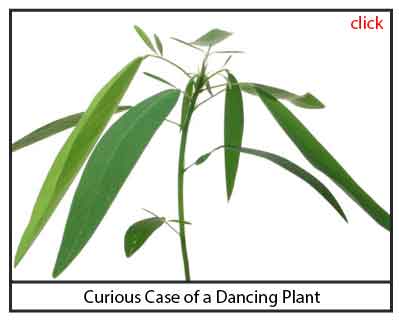 in Plants. (3) The dancing movement is so conspicuous than any other plant, and a striking characteristic is its rapid movements when exposed to sound (Ellingsurd, 1993), in particular, sensitive to high-pitched sounds such as whistle-blowing sounds. The relationship between sound and movement still remains a mystery. One hypothesis is that plants can have animal-like learning behavior that uses its own memory and tactics for survival. (•) The movement is called rapid plant movement or thigmonasty, a response controlled by specialized pulvinus cells, which act as hydraulic mechanisms that regulate water pressure, causing the leaves to rotate, bend, or lift in reaction to external stimuli. An intriguing aspect is its sensitivity to sound frequencies. Studies have shown the plant reacts to sound waves between 70 and 1000 Hz - ergo: the name, dancing plant. (12) The plant remains and elusive botanic enigma. (Video links: OddScience - The Telegraph Plant / Curious Case of a Dancing Plant) in Plants. (3) The dancing movement is so conspicuous than any other plant, and a striking characteristic is its rapid movements when exposed to sound (Ellingsurd, 1993), in particular, sensitive to high-pitched sounds such as whistle-blowing sounds. The relationship between sound and movement still remains a mystery. One hypothesis is that plants can have animal-like learning behavior that uses its own memory and tactics for survival. (•) The movement is called rapid plant movement or thigmonasty, a response controlled by specialized pulvinus cells, which act as hydraulic mechanisms that regulate water pressure, causing the leaves to rotate, bend, or lift in reaction to external stimuli. An intriguing aspect is its sensitivity to sound frequencies. Studies have shown the plant reacts to sound waves between 70 and 1000 Hz - ergo: the name, dancing plant. (12) The plant remains and elusive botanic enigma. (Video links: OddScience - The Telegraph Plant / Curious Case of a Dancing Plant)
- Etymology: The genus name Codariocalyx derives from Greek words kodarion (sheath) and calyx (cup or flower base), referring to the sheath-like bracts subtending the flowers. The species epithet motorius is Latin, meaning "pertaining to motion" or "having power of motion", referring to the plant's rapid leaflet movements. The common names - dancing plant, telegraph plant, and semaphore plant - refer to the rotation of the leaflets, likened to flags in a semaphore telegraph.
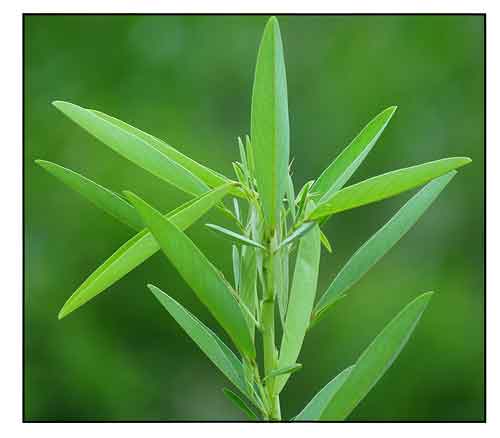 Botany Botany
• Shrubs, to 1.5 m tall. Stem simple or branched, glabrous. Leaves 3-foliolate, often 1-foliolate by reduction of lateral leaflets; petiole 1.1-2 cm; terminal leaflet blade narrowly elliptic or lanceolate, 5.5-10 × 1-2.5 cm, abaxially appressed pubescent, adaxially glabrous; lateral ones when present narrowly elliptic or linear, very small. Panicles or racemes; rachis with reflexed uncinate and straight rigid hairs. Pedicel 1-4 mm at anthesis, 3-7 mm in fruit. Calyx 2-2.5 mm; tube 1-1.5 mm; lower lobe dentate, upper lobe deeply 2-toothed at apex. Corolla purplish red; standard 7.5-10 × 7.5-10 mm; wings 6.5-9.5 × 4-5 mm; keel 9-10 × ca. 3 mm, long clawed. Stamens 8-11 mm. Gynoecium 1-1.2 cm; ovary puberulent. Legume falcate or straight, with sparse short hooked hairs, dehiscent along lower suture when mature. Seeds 4-4.5 × 2.5-3 mm. (Flora of China)
Distribution
- Native to the
Philippines. (2) (1)
- Lowland to medium elevation thickets, ravines, etc., showing distinct preference for areas subject to moderate to strong dry season. (2)
- Also native to Assam, Bangladesh, Borneo, Cambodia, China South-Central, China Southeast, East Himalaya, India, Jawa, Laos, Lesser Sunda Is., Malaya, Myanmar, Nepal, Pakistan, Sri Lanka, Sulawesi, Sumatera, Taiwan, Thailand, Tibet, Vietnam, West Himalaya. (1)
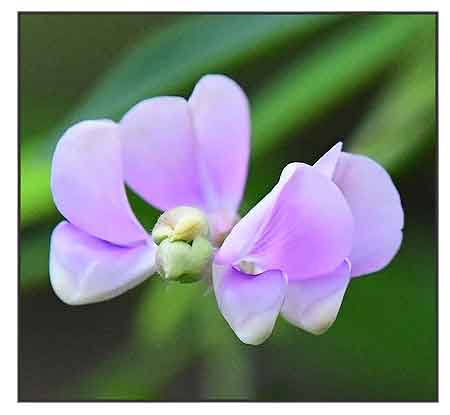 Constituents Constituents
- Study for nutraceutical components for soluble, reducing and total sugar contents in percentage by fresh weight were 13.1, 8.0
and 19.8 in roots, 7.2, 6.8, and 16.4 in stems, 8.5, 5.1, and 15.6 in leaves, and 7.9, 8.2, 23.6 in seeds, respectively. Crude fiber contents in roots, stems, leaves and seeds were 2.8, 5.7, 0.4, and 4.6, respectively; crude protein 11.0, 8.8, 17.3, and 22.4; soluble proteins 5.7, 4.9, 8.1, and 8.7, respectively. Total amino acid contents in hydrolysates of roots stems, leaves and seeds were 4.52, 3.35, 18.2, and 18.86 g/100g dry weight; essential amino acids 1.72, 1.41, 7.54, and 7.22 g/100 g DW. (4)
-
Crude fat contents in % by FW were 9.2, 25.1, 12.5 and 8.5; and unsaturated fatty acid contents in % accounting for the total were 85.6, 85.7, 87.3 and 82.2 respectively in roots, stems, leaves and seeds; especially high proportions of linoleic acid existed in different plant parts. Leaves yielded eicosenoic acid (5.6%). Ca contents were 361.5, 563.4, 552.2 and 91.3 mg, K contents were 356.3, 353.8, 136.9 and 123.8 mg, and Mg contents were 55.9, 54.1, 48.4 and 21.5 mg respectively, per 100 g dry weight.
(4)
- Study of leaves extract for total phenolic, total flavonoid, and tannin contents yielded 81.24 mg GAE/g, 190.90 mg QE/g, and 77.29 mg GAE/g, respectively. (see study below) (5)
- Preliminary phytochemical screening of leaf extracts yielded flavonoids, glycosides, phenolic compounds, polyphenols, saponins, amino acids, carbohydrates, reducing sugars, and tannins, with absence of alkaloids, phytosterolds, and cyanogenic substances. Elemental analysis revealed potassium, calcium, sulphur, iron, manganese, zinc, and copper. (see study below) (9)
Properties
- Purple flowers attract bees and butterflies.
-
Studies have suggested nutrient, analgesic, hepatoprotective, antihyperglycemic, anti-inflammatory, antidiabetic, anticancer, antibacterial, antioxidant properties.
Parts used
Leaves, roots.
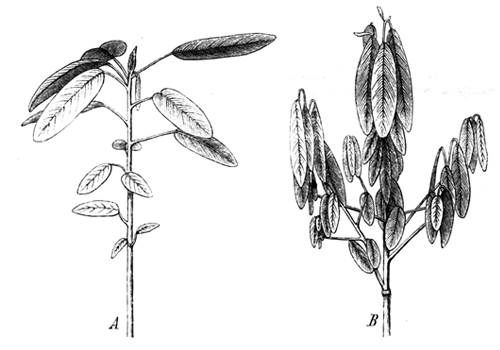 Uses Uses
Edibility
- No reports on plant parts edibility.
Folkloric
- No reported medicinal use in the Philippines.
- In Chinese Medicine, used for treatment of cough and hepatitis, and stress-related diseases.
- In Indian folk medicine, leaves used as diuretic, febrifugal and to
mic; roots used for asthma, coughs, as antidysenteric, and as emollient. In China, used for rheumatism, cough, malaria, fever, dysentery, hepatitis, hemoptysis. (9)
- In Siddha medicine, Codariocalyx motorius, widely dispersed in China, Bangladesh, Cambodia, Bhutan, Indonesia and India, is used as antidote, cardiac tonic, and wound healing ointment.
(see study below) (13)
- Leaves and roots taken orally used for fever, asthma, cholera, dysentery, headache, and as appetite stimulant, emollient, general tonic.
(15)
- Decoction of roots used for snake bites/
Studies
• Analgesic / Antihyperglycemic / Hepatoprotective / Leaves: Study of evaluated C. motorius leaves for phytochemicals and various pharmacologic activities. In acetic acid-induced writhing model, the extract inhibited writhing reflex by 49.4% at 500 mg/kbw dose. In oral glucose tolerance test, the extract decreased blood glucose in a dose dependent manner in hyperglycemic mice. In paracetamol-induced hepatoprotective test, dose of 250 and 500 mg/kg dose-dependently reduced levels of bilirubin, SGOT, SGPT, and ALP. (see constituents above) (5)
• Syk/Src-Targeted Anti-Inflammatory Activity: Study evaluated the inhibitory activity of Codariocalyx motorius ethanol extract (CmEE) towards inflammatory responses. Lipopolysaccharide (LPS)-treated macrophages and a HCl/EtOH-induced gastritis model were used for evaluation of anti-inflammatory activity of CmEE. CmEE strongly suppressed nitric oxide (NO) and prostaglandin E2 (PGE2) release. CmEE-mediated inhibition was observed at transcriptional level in form of suppression of NF-kB (p65) translocation and activation. Orally administered CmEE inhibited gastritic ulcer formation and phospho-rylation of IkBα and Src in HCl/EtOH-treated stomach of mice. Phytochemical analysis revealed major components of luteolin and its glycoside, apigenin-7-O-glucuronide, and scutellarein-6-O-glucuronide. Among them, luteolin strongly suppressed NO and PGE2 production under the same conditions. (6)
• Antidiabetic / Roots: Study evaluated the effects of ethanolic root extract of C. motorius (CMRt) on blood glucose, insulin, and carbohydrate metabolic enzymes in STZ-induced diabetic rats using doses of 100 and 200 mg/kbw for 30 days. CMRt treatment showed decrease in blood glucose and glycosylated hemoglobin with improved serum insulin levels. There was increase in carbohydrate metabolizying enzymes, glucose-6-phosphate-dehydrogenase and glycogen content in CMRt treated rats. RP-HPLC analysis revealed presence of chlorogenic acid, myricetin, quercetin, and gallic acid. Results showed antidiabetic effect of CMRt via normalization of key enzymes of carbohydrate metabolism and restoration of pancreatic islets and function proving its traditional value. (7)
• Antibacterial / Leaves: Study evaluated antibacterial activities of pet ether, ethyl acetate, ethanol, and aqueous leaf extracts of C. motorius against Gram (+) Enterococcus faecalis, Staphylococcus aureus, and Gram(-) Escherichia coli, Pseudomonas aeruginosa. MIC values were between 3.9 and 125 mg/ml and MBC were 31.25 to >250 mg/ml. Gram positive bacteria were more sensitive than gram negative bacteria. Results suggest usefulness against E. faecalis and S. aureus infections. (see constituents above) (9)
• Antioxidant / Anti-Inflammatory / Whole Plant: Study evaluated the antioxidant and anti-inflammatory activities of Desmodium gyrans (DG) using 70% methanol extract of whole plant. IC50s for scavenging superoxide, DPPH, hydroxyl and ABTS radicals and inhibiting lipid peroxidation were 12.6, 4.0, 13.5, and 1.95 and 74.0 µg/ml respectively. Acute and chronic anti-inflammatory studies were done in hind paw of Balb/c mice. Percent inhibitions were 13.02 and 17.39 in acute study and 13.9 and 31.71 in chronic anti-inflammatory experiments. Results showed excellent antioxidant and anti-inflammatory activity, especially for chronic inflammation. (10)
• Sensorial Abilities of Codariocalyx motorius: Study evaluated the Codariocalyx motorius for sensorial abilities, addressing these questions: Does Cm react to sounds in its electrical signals: Can the electrical signal be used to find differences between different sounds? Can the electrical signal be used to infer the sound played to the plant? Using three evaluation methods, the answer is yes. Electrical signal recorded conveys information on the reaction of the plant to sounds, which can be analyzed and classified with better accuracy than random guessing. The plant reacts strongly to 600 Hz by changing the electrical signal sent through the plant. The plant perceives sound in its environment and shows this reaction in the electrical signal. (11)
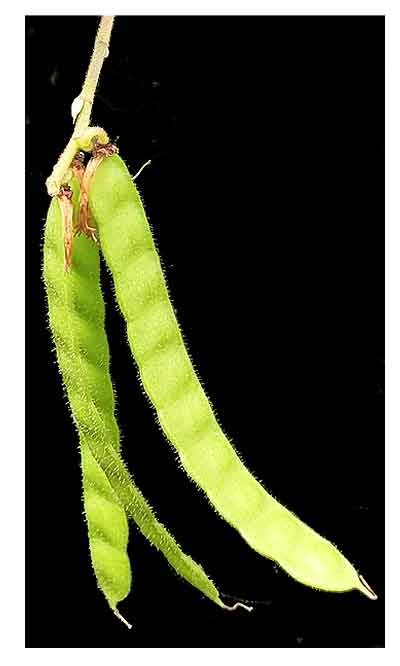 • Karpa Chenthur / Anticancer Polyherbal Formulation: Study evaluated the anticancer properties of Karpa Chenthur, a polyherbal formulation of four selected medicinal plants - Codariocalyx motorius, Melia dubia, Boerhavia diffusa, and Cynodon dactylon - with claimed anticancer properties in Indian traditional medical system. In vitro studies confirmed the anticancer property of the herbal formulation. Phytochemical screening revealed rich flavonoid contents followed by polyphenols and glycosides. Preliminary results suggest Karpa Chenthur can ameliorate adverse effects associated with cancer. (13) • Karpa Chenthur / Anticancer Polyherbal Formulation: Study evaluated the anticancer properties of Karpa Chenthur, a polyherbal formulation of four selected medicinal plants - Codariocalyx motorius, Melia dubia, Boerhavia diffusa, and Cynodon dactylon - with claimed anticancer properties in Indian traditional medical system. In vitro studies confirmed the anticancer property of the herbal formulation. Phytochemical screening revealed rich flavonoid contents followed by polyphenols and glycosides. Preliminary results suggest Karpa Chenthur can ameliorate adverse effects associated with cancer. (13)
• Antioxidant / Free Radical Scavenging / Roots: Study evaluated C. motorius root extract for phenolic content and antioxidant properties using various in vitro assays. Root extract exhibited potent total antioxidant activity that increased with increasing concentration, which compared with standard s such as quercetin, butylated hydroxytoluene, and tocopherol at different concentrations. Extractss showed effective reducing power, free radical scavenging, superoxide anion scavenging, nitric oxide scavenging, lipid peroxidation. There was high correlation between total phenolic content and scavenging potential of different reactive oxygen species, indicating polyphenols as main antioxidants. Results suggest the highly active antioxidant substances from the roots can be used for treatment of oxidative stress-related diseases. (14)
• Gold Nanoparticles / Antimicrobial, Antioxidant, Anticancer: Study reported on the synthesis of gold nanoparticles using plant extract of Codariocalyx motorius. The biofabricated CM-AuNPs showed strong antioxidant activity in DPPH assay with IC50 of 61.27%. NPs showed notable antibacterial activity against Gram(+) and Gm(-) bacteria with ZOIs of 6 and 5 mm. The CM-AuNPs showed significant antiproliferative effects with IC50 of 6.89 µg/mL against HepG2 cells, indicating potential pathways for therapeutic interventions. (16)
Availability
- Wild-crafted.
- Ornamental cultivation.
- Seeds in the cybermarket. (S•)(L•)
|

![]()



 Gen info
Gen info in Plants. (
in Plants. (

 Uses
Uses
